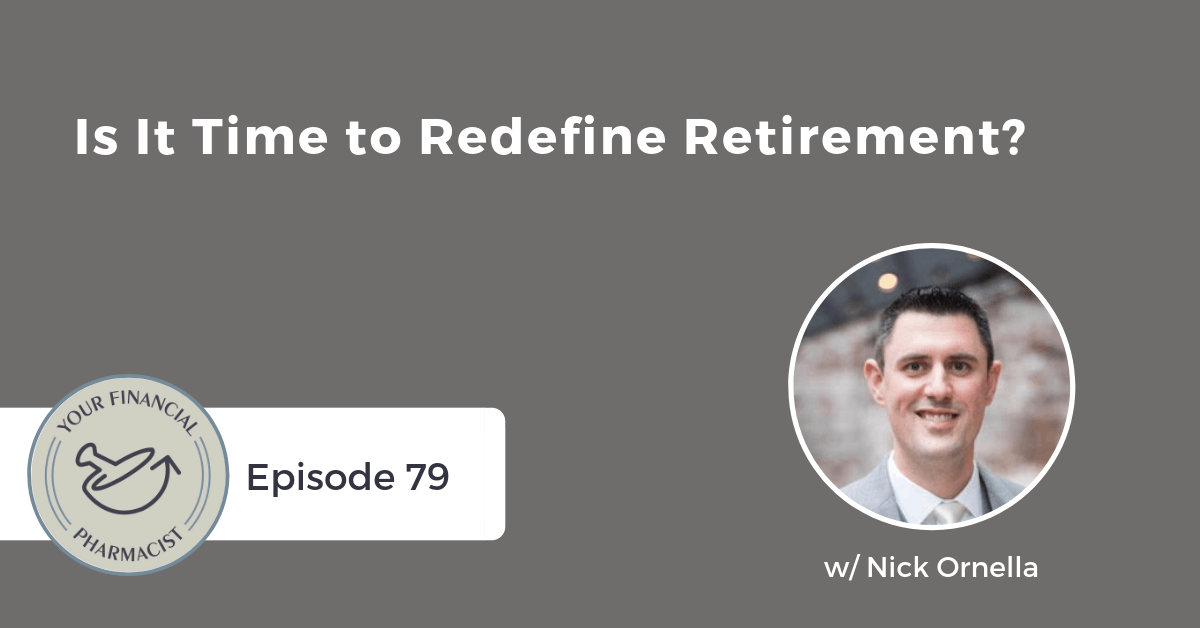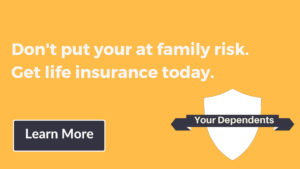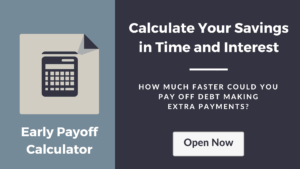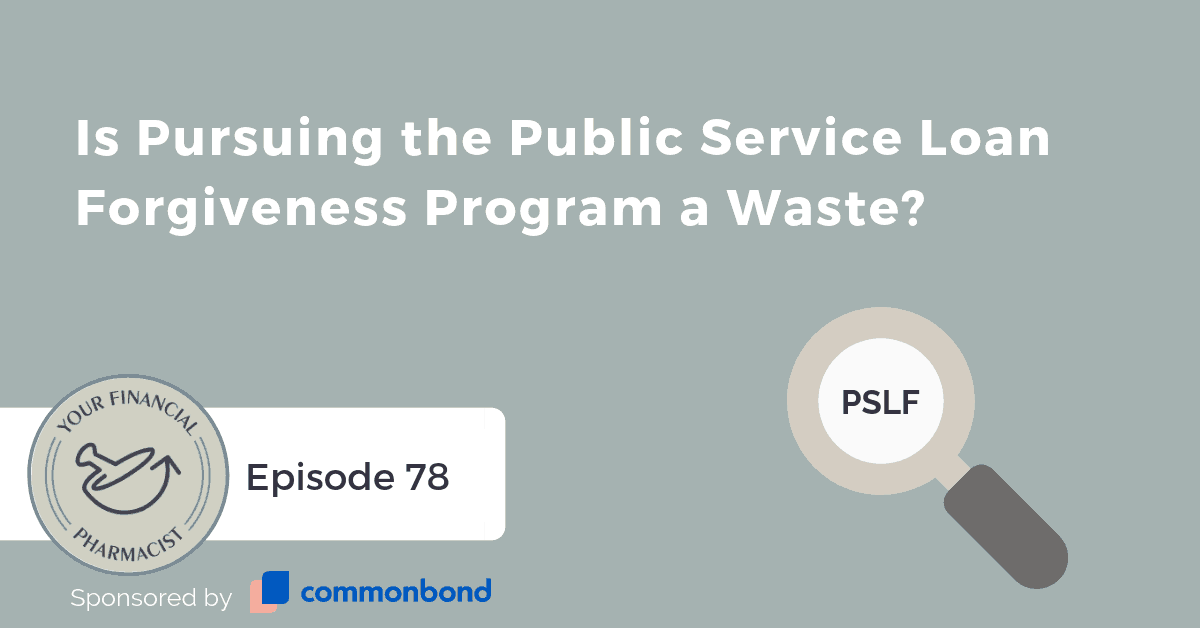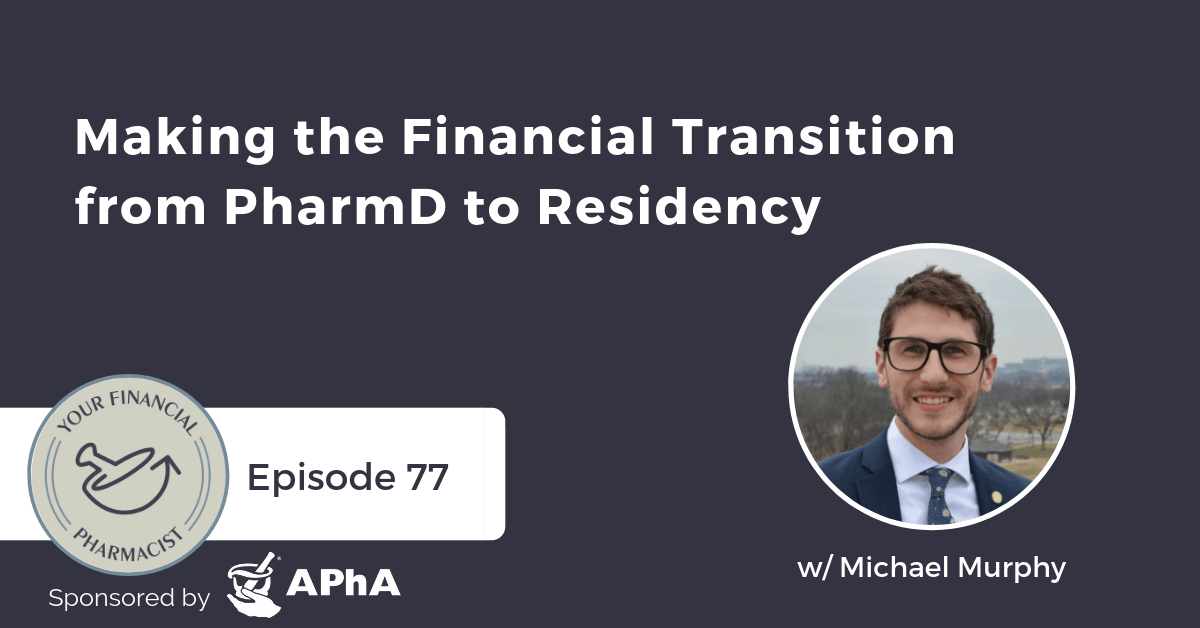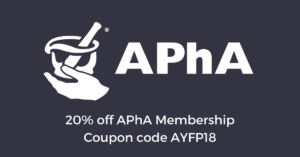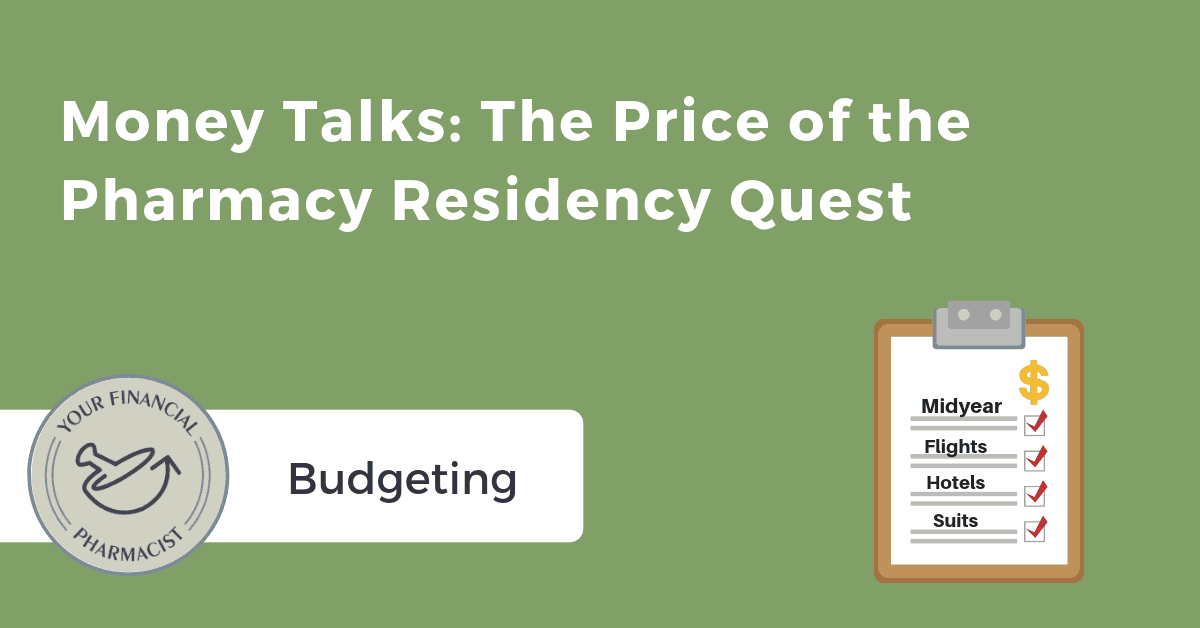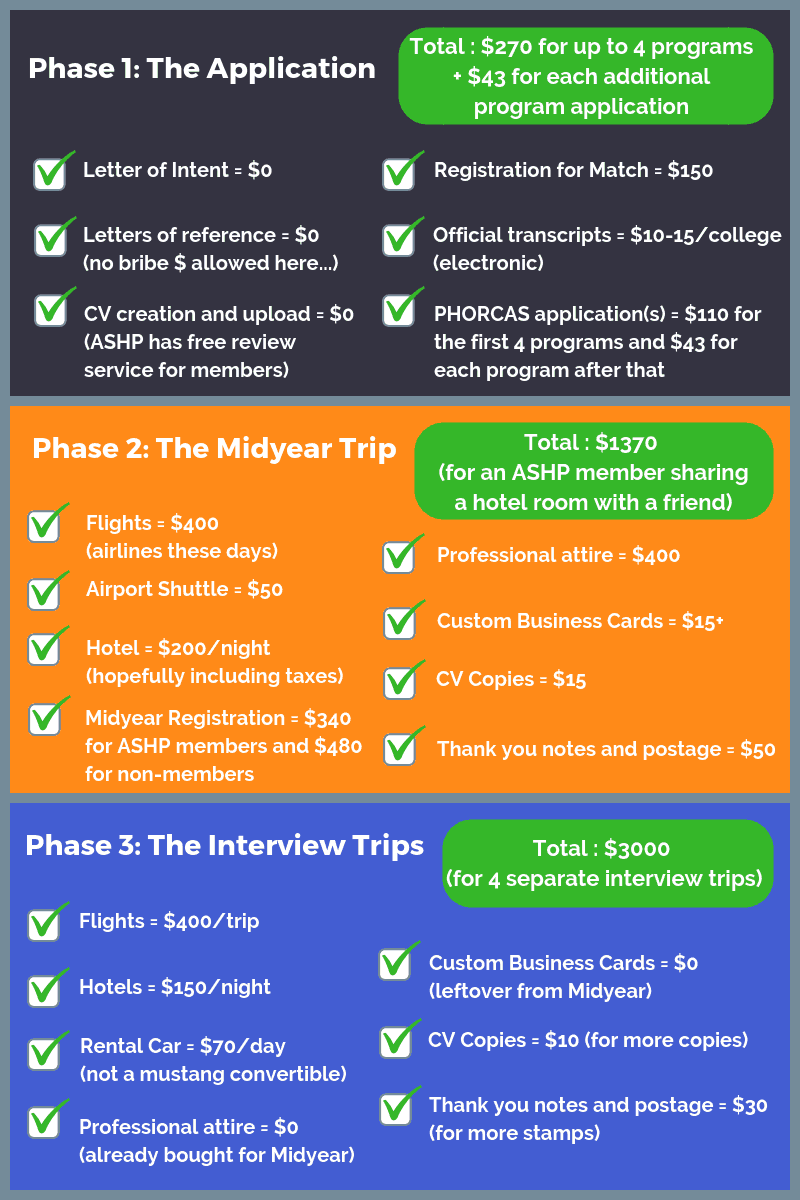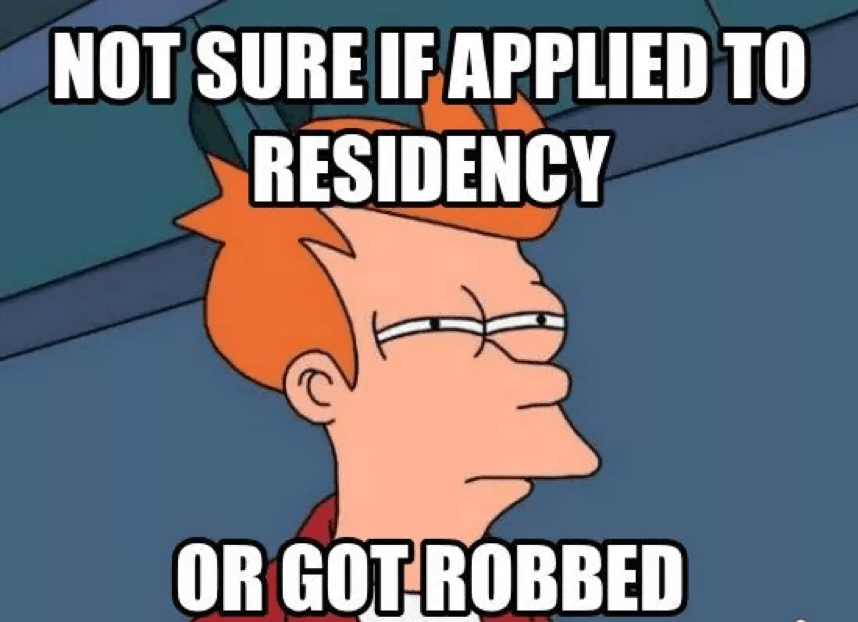Is It Time to Redefine Retirement?
On episode 079, Tim Ulbrich, co-founder of Your Financial Pharmacist, interviews Dr. Nick Ornella, a 2009 graduate of Ohio Northern University, about his journey paying off his student loans in 10 months and shortly after taking one year off to travel the world. Tim and Nick share thoughts of what it means to redefine retirement and why the concept of mini-retirements are gaining traction. They finish the show up by getting practical with 7 steps you can take to plan for a year off.
About Today’s Guest
Nick Ornella is a 2009 graduate of Ohio Northern University’s College of Pharmacy. He began working for Walgreens when he graduated. Nick was able to pay off his student loans within 10 months. In 2016, he decided to take a year long leave of absence from work to travel. Nick spent an entire year traveling around the western United States, Europe, and east Africa. In 2018, he married his wife, Alanna, and they currently live in Cincinnati. Nick is now back to working for Walgreens as a pharmacy manager. Nick also created a blog called the Young Professional’s Guide to a Year Off to tell the story of his year off and to show other young professionals how to take extended time off work to travel.
Summary
On this episode, Tim Ulbrich interviews Dr. Nick Ornella, a 2009 Ohio Northern University graduate. Nick knew in high school that he wanted to become a pharmacist and began taking the necessary steps to do so. His parents helped to financially support his college career. Nick worked hard in school to earn scholarships from Ohio Northern University that helped to offset his indebtedness. He worked as an intern at Walgreens during school and took advantage of their tuition reimbursement program. At graduation, he had accrued $35,000 in debt.
Nick went to work the day he became a licensed pharmacist. He wanted to build a strong financial foundation and decided to live with his parents so that he could pay off his student loans as quickly as possible. After paying off his loans, he started 401(k) contributions and maxed them out. He avoided big purchases, aside from a 2011 Audi A5, lived humbly in a small apartment, didn’t use a credit card or rack up any credit card debt and minimized costs any way he could.
Nick was fed up with his job and decided, after a lot of contemplation a research, that he wanted to take a year off of work to travel. He had a nice nest egg in his 401(k) and $40,000 in his savings account with no other debt. He purchased several books on how he could travel frugally and for additional inspirational stories and information to help make this long-time dream a reality. He decided he was all in and would have no regrets. He was able to receive a leave of absence from work giving him the ability to take a year off to travel several places in the U.S., Europe and Africa. During his travels, he found himself often living in the present moment and truly finding contentment in his life, a feeling he had never experienced before.
Nick has come to realize that the concept of retirement needs to be rethought and that it’s important to step out of the rat race of work to create pockets of time that you can truly enjoy. Since his return, he created a blog and also lays out 7 financial steps to take a year off.
Mentioned on the Show
- Script Financial
- Young Professional’s Guide to a Year Off
- The 4-Hour Work Week: Escape 9-5, Live Anywhere, and Join the New Rich by Timothy Ferriss
- Vagabonding: An Uncommon Guide to the Art of Long-Term Travel by Rolf Potts
- How to Travel the World: Travel Cheaper, Longer, Smarter by Matt Kepnes
- Rich Dad, Poor Dad: What the Rich Teach Their Kids About Money – That The Poor and the Middle Class Do Not by Robert T. Kiyosaki
- YFP 032: Find Your Why (Part 1) – 3 Life Planning Questions w/ Tim & Jess Ulbrich
- YFP 033: Find Your Why (Part 2) – The Path to Success w/ Tim & Jess Ulbrich
- Year Off Blog: The 7 Financial Steps to a Year Off
- Year Off Blog: Calculate Your Year Off Age
Episode Transcript
Tim Ulbrich: Hey, what’s up, everybody? Welcome to Episode 079 of the Your Financial Pharmacist podcast. We have a special treat for you on today’s show, Dr. Nick Ornelia, Walgreens pharmacist, fellow Ohio Northern University alum — go Polar Bears — and blogger at Young Professionals Guide to a Year Off. He’s going to share his journey of crushing it to pay off his student loans and shortly after, taking one year off to travel the world. Nick, welcome to the Your Financial Pharmacist podcast.
Nick Ornelia: Hi, Tim. Thanks for having me. Really honored to be here on the podcast.
Tim Ulbrich: Super excited to have you. And I’m fired up about talking about this topic. We’ve actually had lots of interest. People write in about this concept of retirement, should we be thinking about retirement in a different way? Many people know of Tim Ferriss’ work in the 4-hour work week, where he talks about this concept of mini-retirements. We’ll get there, but first, I want to take our listeners — and I don’t know if you’ll remember this, Nick, all the way back to January 4th, 2016, I actually pulled up my email before we were recording — brand new, the Your Financial Pharmacist blog had just started, and you wrote me an email. And the subject line was, “Taking a year off of work.” And I’m going to read this email quick because I think it’s going to set the stage for our conversation today and obviously, show our listeners of what you executed on in taking this year off. So you said, “Hello. Just wanted to know if you’ve ever heard of a pharmacist taking a year off work to travel and/or spend more time with family. If so, what kind of financial impact did that have on them? And what kind of difficulty did they have rejoining the workforce as a pharmacist? Thanks, Nick.” So Nick, with that in mind, give us the back story at this point in time, almost three years ago, when you were thinking about this idea of taking a year off. What was stimulating this interest for you? And maybe what fears were going on in your mind at that time?
Nick Ornelia: That’s incredible that you still have that email because I was scouring the internet at that time, trying to find any kind of example of any pharmacist or similar healthcare professional who had done something similar, just to see kind of like what their experience was and to get some information. And your blog popped up, and actually, I recognized your name. I knew you had gone to Ohio Northern. So I shot you that email, and you know, your response and your quick reply was actually a big kind of help for me, kind of a push out the door. So I will forever be grateful to the Financial Pharmacist for that. But the idea had been kind of brewing in my mind for probably at least a year before then, probably even longer. I had heard about people taking gap years, taking extended time off, maybe like after college or a sabbatical at some point in their career. So the idea was always in the back of my mind as a possibility that sounded pretty awesome and pretty cool, and maybe someday, I can do that. But I’d never really given it too much though until probably about April of 2015, so this was about a year before I started my year off. I was in a long-term relationship at the time. And it wasn’t going as I had hoped it to go. We ended up being two completely different people, and that day I remember in April, I remember we got in a big argument, and it just wasn’t my day. I was having a bad day. A bad day at work, I was kind of fed up with everything. And I went down into the basement, and I ordered three different books off of Amazon. And one of them was the book that you just mentioned, “The 4-Hour Workweek” by Timothy Ferriss. Another one was called, “Vagabonding” by Rolf Potts. And then the third one was, “How to Travel the World on $50 a day.” And that right there was like the first tangible step that I took that kind of set me on that path. And I read those books in a matter of days, and from that point on, it was a daily thing where I thought about it, I dreamed about it. And I really at that point, wanted to make it happen. So as I said, I was in that relationship and later that October, I believe it was, October 2015, about six months before I started the whole year of travel, that relationship ended amicably. We just realized we weren’t right for each other. And the day that that relationship ended, which was probably the hardest day of my life up to this point, very difficult, but that was the day that I decided to go through with it, to take the year off and to jump into it and have no regrets about it.
Tim Ulbrich: So Nick, when you emailed me, you didn’t talk about financial fears, per say, but I’m guessing there were things at the time you were thinking about as a young practitioner, 2009 graduate, maybe fears around whether it’s job security or am I going to be delaying retirement? All these things. I mean, what was going through your mind at that point of potential financial barriers that you saw or — whether they were real or not or maybe perceived to be greater than they were — but financial barriers that you saw that may have prevented you from taking that year off?
Nick Ornelia: There weren’t too many, honestly. I had done a really good job — I’m sure we’ll get into this, but I paid off my loans super quick. I had a nice nest egg in my 401k. I had about $50,000 saved up in my savings account. And after reading that book, “How to Travel the World on $50 a day,” you know, if you calculate that out, 365 days, that’s about $19,000 I think is about what that works out to. That’s traveling relatively cheaply. I knew I didn’t want to travel that cheaply. So that’s where that extra money came in. So I knew, even if I traveled as cheaply as I could, I knew that I would have enough money to last the year. So I was not concerned about running out of money there. I did think quite a bit about the opportunity costs, so you know, you’re going a whole year without earning any money. You’re going a whole year without contributing anything to your 401k. And if you’re looking 30-40 years down the road, that money, if you max it out at $18,500, that’s going to be a considerable amount of money that you’re potentially missing out on. So I thought of those opportunity costs, but then I thought of myself sitting there at the age of 65, you know, with all this extra money but then the thought of never having gone through with this dream of mine to take a year off work. And that was kind of ultimately one of the main reasons why I decided to do it. I was afraid of that regret. Yeah, the money would be great to have at that age, but what are you going to spend it on then? I’m young now, I have the opportunity to do this right now, to live in this moment for an entire year. And so that’s one of the main reasons why I did it. But the financial risks, I mean, probably the biggest risk I was worried about then was my ability to make money. Our biggest asset is our ability to make money. And you know, just being concerned about coming back to a job, to full-time work. But I was prepared for anything. I was prepared to find a different job just to make ends meet for the time being until I was back to full-time pharmacist work. So the financial risks, you know, I looked at them, but I tried not to worry too much about them because if you worry about every single little thing like that, you’re never going to take a leap, you’re never going to take a risk. And you’re going to kind of be stuck sitting on your hands. So eventually, I just was like, whatever. Let’s just jump in and do it. And if I’ll end up on my last dime, I’ll kind of worry about that then. But in the meantime, let’s just do this.
Tim Ulbrich: I really hope, Nick, our listeners will go back and rewind and replay the last few minutes of what you said. I think there’s so much wisdom there. And you know, we talk about the x’s and o’s of personal finance, all of which are important. But at the end of the day, this reminds me back to the conversation Tim Baker and I had with Jess, my wife, and I about really finding your why and not losing sight of your passion, your interests, your purpose, in addition to the x’s and o’s. And I think it’s easy to get hung up in making sure you have your t’s crossed, your i’s dotted with your personal finances. But one of my greatest fears that I share with what I think I heard you say was looking back 30 or 40 or 50 years from now and saying, I saved up all of that for what? What was the purpose? And I think the enjoyment of life experiences is huge. And I’m so glad you took that leap of faith, and I think your story is going to encourage so many others that are maybe feeling in a rut or they’re stuck, they’re stressed and really wanting to pursue a similar path. And we’re going to get tangible here in a little bit about how they can think about doing that. But what I also want to say is I don’t want to brush over what I know you did, which is huge, is you had a solid financial foundation, which allowed this to become a reality. And so many people that are listening are thinking, wow, I’ve got $200,000 student loan debt, I’ve got credit card debt, I’ve got this going on. I’ve got young kids and expenses and I don’t have margin to do something like this. And I think what your story resonated to me, as I’m reading right now through “Rich Dad, Poor Dad,” for a second time, is he talks about the importance of having a strong financial foundation so you can take risk. Now, in his book, he’s really talking about risk from real estate, the business aspect, doing some things that are entrepreneurial, but I think taking risk of taking time off and developing yourself is another aspect of risk. So share with our listeners for a moment, how did you build that strong foundation? You paid off student loan debt in 10 months, you built up some savings, you began retirement, how is that possible? And what was the strategy of doing that in such a short period of time, which takes many other people maybe five or 10 years to get to that point?
Nick Ornelia: Yeah, sure. First of all, you just mentioned the episode about the interview of you and Jess with Tim Baker.
Tim Ulbrich: Yeah.
Nick Ornelia: THat was my favorite episode by far so far, just hearing you guys talk about your whys and the questions that he was asking you just really got me thinking, and I literally, I was at the gym when I listened to that episode. And right when the episode was over, I just got out my phone and I texted my wife and I told her, “I love you.”
Tim Ulbrich: Awesome.
Nick Ornelia: So that, the stuff that you guys are doing is just fantastic in that regard. So I wanted to get that in there. But yeah, going back, my kind of financial story. I mean, really it started in high school, and I just decided to go to pharmacy school. I knew I was good at math and science, and I knew that pharmacists made a good salary, and that honestly kind of why I chose it. And so I went in knowing that I was doing pharmacy and knowing that I would have the degree after six years. And I went with the best financial package, which happened to be Ohio Northern. And so really did a good job of minimizing my debt. My parents were paramount in that. I know they helped me out quite a bit throughout my college years, and it’s something that I’ll never forget, it’s something that I plan on paying forward with my children. But I also, you know, at Ohio Northern, it’s a bit different for all the student listeners out there. Our last two years, our scholarship was based completely on our GPA from our first four years. And there were days that I buckled down, and I went and I studied and I got good grades and got a pretty good financial package for the last two years of pharmacy school. So I was able to come out of ONU with only about $35,000 in debt. I had also taken some money from Walgreens, I started as an intern there and took every single dollar that they offered as far as tuition reimbursement, which really helped minimize my debt as well. So upon graduation, I went right into work. I didn’t mess around. The day I got licensed, I went into work later that day. So I jumped right into it. I was living with my parents at the time and just continued to live with them and my sole purpose in life was to make that $35,000 in debt disappear. And I did owe my dad a little bit of money for a car so I had to pay that off as well. So I just lived at home with my parents, didn’t do much but work, picked up extra shifts and by I think it was January — I got licensed in I think June or July and then by that following January-February, I hit that final payment button. And that was the end of the student loans for me. I know it’s not as easy for a lot of listeners. And I’m forever grateful for that. That’s something that I’ll forever be grateful for. But at the same time, you know, once I paid off my loans, I still kind of kept in that saving money mindset, so as soon as I paid those off, I started my 401k contributions. And from the get-go, I maxed them out. I was throwing 15% of my salary. I started it that January right after I paid off my loans. So I had been maxing that out ever since then, ever since January of 2010. And then also, I really avoided the big purchases. I was young and dumb a little bit. I bought a 2011 Audi A5. You know, you guys call it the million-dollar car and essentially, it is a million-dollar car.
Tim Ulbrich: It might have been 2, right?
Nick Ornelia: But you know, I did that. And that was probably my biggest financial mistake leading up to my year off. I didn’t buy a house, I rented a small apartment that was easy to furnish, cheap, and all my other spending was kept in check. I wasn’t buying new gadgets, I never had credit card debt, never a penny of credit card debt. So I just saved as much money as I could and minimized my costs as much as I could. And that really helped build that financial base that you were talking about, really building the net worth. I know you guys are big net worth guys, and I was really able to do a good job of that over those four or five years leading up to when I actually decided to take a year off.
Tim Ulbrich: Yeah, and Nick, what I appreciate about your journey there — and I hope the students listening heard that your financial foundation post-graduation starts when you’re in school. It’s the decisions you’re making. Yes, you had parental support, which is awesome, but also in there was scholarships and pursuing those types of things, being intentional about putting yourself in a position to get those scholarships. It’s about doing everything you can post-graduation to minimize accumulation of interest and keeping costs down and not buying big homes and other things. So yes, you had help. But there’s intentionality in that and all the way back to your P1 year at Ohio Northern, building that foundation and your parents helping you do that, obviously was a big factor in allowing you to do the things that you’re doing today. So let’s get to the point of, you make this decision, say, “You know what? I’m doing this. I’m taking a year off.” Walk us through that conversation with your employer. What was their receptiveness to it? What security, if any, did you have about if I take this year off, will my job be here? Take us through that conversation with your employer and what was going through your mind at that time.
Nick Ornelia: Yeah, sure. So when I decided to do it, that day that I decided in October of 2015 that I’m going through with this, no matter what, I knew I had two options. I knew I had the option of trying to figure out a leave of absence. And then the alternative option was to quit, to just walk away. And I had it in the back of my mind that even if I can’t work out this leave of absence, I’m going to do it. I’m going to quit. It’s what’s going to be required for me to do this. But I’m going to do it if that’s what it comes down to. So I had that idea in the back of my mind, that kind of promise to myself to do that. But you know, obviously, I wanted to work out a leave of absence. It’s a lot more preferable to quitting, obviously, to have at least some sort of guarantee of work to come back to in a year. It takes a big worry off your mind so you’re able to enjoy the year a little bit more. And to be able to walk back and make any kind of money to begin supporting yourself again is really important, if you can make it happen. So I started looking on the Walgreens website, on our internal website, and found the leave of absence form. And it was the same form that you use for — I think you used it for family medical leave, for personal medical leave, I think even for maternity leave. But the very last option, leave option, was just a personal unpaid leave of absence. And it was left completely blank, no discretion, no direction as what to use it for. So that was my route, so I printed that form out and I needed three different signatures on it. I needed a signature from somebody in my store, which I had my pharmacy manager Jason who happens to be one of my best friends. He was super excited for me when I told him about it, and he signed the form no problem. He was one of my biggest supporters, just an incredible guy.
Tim Ulbrich: That’s awesome.
Nick Ornelia: Forever thankful for him. So I got his signature, and then I needed my district supervisor’s signature, which she had the same thing. She was super pumped for me and excited. And then I needed a signature from somebody in the leaves department, and I got all three of them and got approved for the leave of absence starting April 1, 2016. And then I had to be back to work by March 31 of 2017. Otherwise, I would be terminated. So I basically had this entire year to do whatever I pleased. And I was completely up front with what I wanted to do. I told them, I said, “Hey, I want to travel for a year. This is where I’m going to go, this is what I want to do. I will be back in a year. I want to work for Walgreens, I don’t want to work for anybody else. I love this company, I like my job. But this is what I want to do right now.” And so I got the necessary signatures, and I’ll never forget the day that I got the letter saying my leave of absence was approved. It was a pretty exhilarating day to know that I had this great big adventure planned ahead of me. So it was pretty awesome.
Tim Ulbrich: Yeah. What I like about that part of your story, Nick, is that to me, when I hear about the reaction from your pharmacy manager and your district manager and how excited they were for you, that tells me the level of value that you had brought to the organization. You know, because if you’re somebody who’s a mediocre employee or a disgruntled employee or an OK, average employee, you’re probably not getting that reaction. So I think it just speaks more to what we’ve talked about before on this podcast about as we encourage and coach people through career aspects is focus on the value that you’re providing to the organization. What value do you bring each and every day? And the rest of it will take care of itself, whether it’s opportunities, whether it’s salary increases, whether it’s things like this where you’re granted a year off and ultimately, have excitement around it as well. Now, I know you and I talked a little bit before the show and before we hit record that technically, there was no guarantee of employment upon your return. But you know, you had some indications that there was support for you in that journey. So you had some peace of mind in that aspect. Is that correct? Is that fair?
Nick Ornelia: Yes. So going back to what you said about being a good employee. That’s paramount to getting a leave of absence like this approved. Just thinking from a manager’s standpoint, I’m a pharmacy manager now. Just thinking from that standpoint of, if I had an employee, one of my best employees, come to me and say, “Hey, I want to do this for a whole year. I’m going to leave, but I will be back in a year.” I kind of know that they’re probably going to quit if I don’t approve the leave of absence. But then I think about, you know, in a year, OK, I’ll be able to have a very good, fully trained, highly competent employee back working for me and no problems. So really, it’s almost — if you’re that good of an employee, if you work your butt off and you do everything that’s asked of you, then it’s to the benefit of the company and to your boss for them to approve that leave of absence and, you know, at least get some sort of a guarantee of you coming back to work for you. Now, on the flip side, if from their perspective it was we’re approving this leave of absence, but at the same time, we don’t know where we’re going to be a year from now. So we can’t completely, fully guarantee you any kind of promises as far as number of hours per week or where you’re going to be, where you’re going to be working. But I was prepared to hit the ground running from the bottom like I did when I was a new grad. I figured I would have had to go right back in the floating and it might have just been part-time work, but anything, even just a couple days of work a week would have been enough to kind of get me back on my feet and get me going again until I eventually work my way back into a store in a full-time position. So yeah, you’re right. There was no guarantee of anything coming back. All that leave of absence did was preserve my company start date. And it preserved — or it suspended my benefits. So that way, when I came back, my benefits would resume how they were before my leave of absence. So yeah, that was kind of one of the risks that I took, but it was worth it to me. It was worth it to me to have a year to pursue my dreams and passions and have to kind of start over with my pharmacy job and pharmacy career. But that was a risk I was willing to take. It’s funny how it all worked out, though. I ended up not having to start from the bottom. So the guy who replaced me in my store, I was a staff pharmacist at the time. I’d been at the store with Jason for I think five years at that point, four or five years. And so the guy that replaced me took a manager’s position at a different store about two or three months before I was due to come back to work. And Jason convinced the district supervisors to hold my position for me at my old store until I got back in like two or three months. So I was able to go right back into the exact same store, the exact same position, full-time work. I think my first day back was March 27, 2017. It was a Monday. And I was right back standing where I was a year ago at that time. So it was quite incredible how it all worked out.
Tim Ulbrich: So let’s talk about your trip. Let’s talk about what you saw, where you went, how much money it had cost you throughout the year. And for me, maybe more importantly, what you learned about yourself during that year.
Nick Ornelia: Sure. So the money aspect, I mentioned I had about $50k saved up in a savings account. $10k of that to me was pretty untouchable. It was my emergency fund and my fund in case I needed money when I came back to keep me going and get me going again. So I had about $40k to spend for the whole year. I had mentioned that book, “Travel the World on $50 a Day,” so I knew if I traveled cheap enough, then I could keep my costs around — my living costs, my living costs, my food, my shelter, my travel, plane tickets, that kind of stuff. I knew if I kept that around that cost, that would leave me about $20,000 extra dollars to basically spend on whatever I wanted to do. So that was kind of my budgeting plan. It wasn’t much of a plan, but at least it was something. But I had limits in mind. I knew I wasn’t going to go over a certain amount. So yeah, so my first six months, I am an absolute huge fan of America’s national parks. I am just in love with them, so I had been to quite a few before then, but I wanted to try to hit as many national parks as I could and as many of these just incredible places out west. So the first six months, I spent out west. I drove all the way to California, spent a couple weeks in the Sierra Nevada mountains, which I know you and Jess are big fans of that. I climbed Mount Whitney, which is the highest mountain in the Lower 48 states. I did that as part of a charity fundraiser thing.
Tim Ulbrich: Yeah, I remember that.
Nick Ornelia: Which was really cool to be able to raise some money for a pretty cool charity that I support. So yes, I did that and then headed over to Utah and spent like three weeks in Utah, just hiking around all the national parks there and exploring just an absolutely incredible state. And I met my buddy Tony in Colorado, spent a week in Colorado white water rafting, and then we drove home together, went to a couple Major League Baseball stadiums along the way. I went home — so I got home early June, spent a few weeks at home in June, and then at the end of June, I headed back out west. My buddy Sam accompanied me this time. We spent another week in Colorado, just hiking around the mountains, backpacking, camping. And then from there, I drove back out to California. I hiked the John Muir Trail, which is about a 220-mile trail through the Sierra Nevadas, which was two of the best weeks of my life, just the beauty of the places that I saw. Just stunning. And then from there, I headed north up into Washington and from there, I spent about three weeks in Washington. I climbed Mount Rainier, which is just one of the most beautiful mountains in the world, in my opinion. And from there, I headed east towards Wyoming. And we haven’t talked about this much, but I was dating somebody at the time. So I mentioned my relationship ended, and a couple weeks after that, I met Alanna, who is now my wife. So I met her — so we were dating at the time, and so she’d decided to fly out. She met me in Wyoming, and we spent two weeks together in Wyoming. And that was really when I knew I really liked her at the time, she was super supportive of my trip. And when she flew out to meet me and we spent those two weeks together, that was pretty much when I realized I wanted to marry her. So that was just an incredible back story of my whole year off, which we don’t need to get too much into, but from there, we drove home. After that, I flew to Europe in September. I spent two and half months in Europe, just backpacking around. My sister accompanied me for a week in Paris and London. And then I came back to Cincinnati for the holidays. And then right after Christmas, I flew to Africa. And I had signed up to do six weeks of volunteer week in Uganda. And then I went to Tanzania for three weeks, I climbed Kilimanjaro, went on safari there. Also in Uganda, I went on a safari, I went and saw the mountain gorillas, did all the fun stuff there. And then Alanna met me again in Kenya for my last two weeks of my year off. And we volunteered together, went on safari and just had an absolute blast.
Tim Ulbrich: And Nick, I’m getting chills just hearing the experiences you’ve had and thinking about obviously what relationally it did for even just building a good foundation for you and your wife now and that experience and some of the mission and service work that you did. And so I think you’ve partly answered that, but let me wrap that around about as you look back on that year, what are some of the things that you learned about yourself during that year? Because I have to imagine when you’re doing that kind of travel, you’ve got work set aside, there’s probably lots of time for reflection and growth. So what were some of your takeaways from that year?
Nick Ornelia: Sure. One of my goals was to learn as much as I could. So I read constantly. I think I read probably around 40 books throughout the course of the whole year. So you know, just learning practical day-to-day and just reading some great literature and great books. I think I learned, I learned quite a bit. A lot of it, in regards to my career, I learned quite a bit. So when I was volunteering in Uganda, I actually volunteered at a pharmacy there. It was a government-run healthcare facility. And they actually had a small pharmacy. It was a closet. It was like 6-foot by 8-foot. And they only had about 25-30 medications that they dispensed. And I was basically given the keys to the place after my second day of work. So I learned quite a bit about the differences in healthcare between a third-world country and our country. And I learned how it is so easy for us here in America to take everything for granted and the opportunities that we have and the long lives, the long, healthy lives that we live here, it’s just overwhelming to look at the differences between those two. So I learned to really appreciate my health, appreciate everything I have here at home, everything that we have here in America, the healthcare system that we have and the opportunity that we have career-wise as well as pharmacists. But there was a lot of personal things that I kind of learned and I think I improved on as well. I think I was always, you know, prior to my year off, I was always thinking ahead or I was always reliving past moments. I was never able to fully live in the moment and fully appreciate a relationship or appreciate my life the way it is. I don’t think I was ever able to just sit down and say, man, I feel like totally, completely content right now. Everything is just perfect right now. I was always thinking ahead or thinking back and worrying about this or worrying about that, and that year just kind of caused a lot of that to just evaporate. And it’s continued on now. I just notice things, just sitting down and just enjoying myself and just not needing any stimulation and not needing to have the TV on or anything like that. This might sound kind of creepy, but one of my favorite things to do is to just observe my wife. I just love just seeing her facial expressions and the way she laughs and the way she does different things. And it’s just really cool to kind of have that perspective and to be able to just slow down now and just take a deep breath and just say, man, this is exactly where I want to be in life. I don’t want to be anywhere else.
Tim Ulbrich: And to be present, I think just what you said there, again, to me, highlights how many things we miss each and every day of not being present, you know, that are right in front of us. So Nick, as I hear you talk about all of the things you did during this year, the things that you learned about yourself, the opportunities to serve, what you were able to obviously gain relationally — to me, it begs the question of do we need to rethink the concept of retirement? So I think kind of the concept that we all know, we’ve been raised in is you grind it out for 40 or 50 years, you save up a nest egg, and you hope you’re healthy enough to use it and enjoy it. And we know many stories of people that aren’t able to do that or things change or they never save it up, they keep working. Does your experience beg the question of whether or not we should rethink this concept of how we do retirement?
Nick Ornelia: I think it absolutely, most certainly does. You know, this idea of just working and working and working in hopes of this great and happy retirement, you know, I think it’s a lot more possible nowadays. We live long lives. The life expectancy is increasing, and you are able to live a good life. And there’s nothing wrong with that way of thinking. Millions, billions of people have gone about it that way and have lived very happy, fulfilling lives. So there’s absolutely nothing wrong with that. But if you’re given the opportunity to pursue something different, to maybe live life a little bit differently, I think you — when you’re able to step out of that rat race for awhile, of the busyness of everyday life and just step back and be able to think and reflect — it help you grow a greater appreciation for everything that you have. And it creates these pockets of time throughout your entire working life where you’re able to just be fully happy and just enjoy yourself and not be caught up in the rat race of life. It’s not an easy thing to do, you know. It takes pretty good financials and a bit of risk, but I think that’s kind of the wave of the future. There’s becoming more and more literature out there about that. There are countries, European countries, Australia, New Zealand, that sort of thing is actually encouraged — taking extended time off. Some countries actually even have walls that protect a worker if they do decide to leave work for a year that allows them to go right back into their same position. And I think you’re seeing more of that today now with — I know Walgreens and I know CVS just recently announced a new paternity maternity leave. We get eight weeks of paid leave whenever we have children. So I think there is a trend kind of in that direction. But yeah, if you’re able to pull it off, it’s a life-changing experience, and it’s incredible. I can’t speak more about it.
Tim Ulbrich: And that’s why I appreciate you sharing your story. I think as I’ve talked about this concept with many pharmacists, I would say most, if not all, say, “Yes. I get it. I agree,” but struggle with the tangible aspect of show me somebody who’s done it and how do I do it? So let’s there in this show as we talk about seven financial steps to take a year off. We’ll link to your blog post about this topic because I think it’s spot on. So we’ll do it in an abbreviated kind of a rapid-fire format. I’m going to pitch each of these out here so our listeners can hear all of them, and then we’ll go back through them one-by-one and hit the main highlights. So in your blog post — and we’ll link in the show notes over at your blog, which is at YPYearOff.com, you talk about seven financial steps to take a year off. Those seven are No. 1, create an emergency fund. No. 2, pay off credit card debt. No. 3, pay off student loans. No. 4, start 401k/IRA contributions. No. 5, start saving for your year off. No. 6, increase 401k/IRA contributions. And No. 7, add more money to your emergency fund, finish retirement savings and finish your year off savings. So first off, No. 1, create an emergency fund. What’s your recommendation for people here when it comes to an emergency fund?
Nick Ornelia: $10k. Quick and easy, $10k. I mean, that’s going to cover everything you need beforehand and then coming home, $10k is more than enough to last you until you get back to full-time work. So $10k is what I had.
Tim Ulbrich: No. 2, pay off your credit card debt. You know, I think probably the most common question some people may have here is how do you balance that with the student loans, which is No. 3. So what advice do you give people there?
Nick Ornelia: So the high interest stuff, get rid of the high interest stuff first. Credit card debt is going to be your highest interest stuff. So if you have any of that stuff, just get rid of it. It’s terrible. Credit cards are fine. You can earn some really nice rewards points and get some nice round-trip flights for your year off by using a credit card, but pay it off in full every month.
Tim Ulbrich: And then third, you have pay off student loans, which we’ve talked extensively about on this podcast. So let’s jump to No. 4, which is start 401k/IRA contributions, which I’m guessing many listening may struggle with this concept of I want to take a year off, I need to save some money. But I also want to be balancing and thinking about the future. So what advice do you have here in terms of people initiating retirement contributions?
Nick Ornelia: Yeah, before a year off, I think it is important to kind of get some money, a good chunk of money into a 401k or an IRA. You know, when you get it into there at a young age, you’re able to take advantage of compounding interest for a longer period of time. And it’s a nice financial cushion to have. Even though it’s pretty much untouchable, you know, it is money that’s yours. And if in the absolute worst case scenario, that you get into trouble during your year off, you have a serious injury or something and you absolutely need the money, you have that money there. Now, it should be completely untouchable in your mind. But it’s that extra financial cushion and that there’s extra years of compounding interest to keep your future financials in order as well.
Tim Ulbrich: Awesome. No. 5, you have start saving for your year off. What is typically — obviously dependent on where people want to go, what they want to do — but what’s a rough number that you give people in terms of how much they should be saving for a year off?
Nick Ornelia: I think $40,000 is — I mean, that’s how much I had. And I lived cheaply. I camped a lot, I stayed in hostels, I stayed in volunteer houses. But I never had to say no to anything that I wanted to do. So if I wanted to spend $1,500 on a safari in Tanzania, which I did, I had no qualms about that. I had the money to do it. Now, obviously if you can’t reach $40k, it is possible to do an entire year for less than that. You can do stuff a lot cheaper than $40,000. And the other thing is, you don’t have to be gone for a full year. You can cut it back to six months, $20,000 for six months. That would make it easier to get a leave of absence possibly. Or even cut it back even further to three months if three months is all you can get. Then maybe you only need about $10,000 or $15,000 for that three months. But $40,000 for a year will give you one heck of a year.
Tim Ulbrich: Absolutely.
Nick Ornelia: You will have a great time.
Tim Ulbrich: And we’ll link in the show notes to the book you referenced earlier that talked about $50 a day. I think getting examples and things people can read will help with that. And obviously reaching out to you as well and hearing your story. No. 6 is increasing 401k/IRA contributions. We talked about that. And No. 7 is adding more money to emergency fund, finish retirement savings and finish your year off savings. What I love about your seven steps here, Nick, is 1, they’re tangible. But 2, what it does is it allows you to go off and to enjoy this year. And I think to reap all the benefits that you did with having a peace of mind that you’ve got a solid financial foundation in place. You’ve got an emergency fund, you’ve got no credit card debt, student loans hopefully are gone or minimized, you’ve begun retirement savings. You’ve got cash for this year off, so it’s really allowing somebody to enjoy that time, which goes to my last question here. And we’ll link to this in your blog as well. But you talk about the concept of calculating your year-off age, which I love because I think it takes this concept, which can maybe seem somewhat nebulous and start to become very tangible and start so that a lot of people can put a goal to say, “OK, at the age of x, I’m going to actually do this. I’m going to make this happen.” So briefly talk us through how to simply get to that calculation of what their year-off age is.
Nick Ornelia: Yeah, sure. I mean, really, all it is is kind of a net worth calculation. You’re trying to reach a goal net worth and based on how much money you make every year, you subtract out your expenses per year so you’re able to figure out, you know, an exact dollar amount of how much you’re able to save to put toward your net worth to pay off debt, to start your 401k contributions and to save for the year off. So based on what your difference, what the gap is between how much money you bring in per year and how much money is going out towards expenses, you can figure an exact age as to when you would have $40,000 for the year, when you would have a good start on retirement savings and when you would have your student loans paid off. So you can, based on that, figure out the exact age that you will be able to do it. So like you said, it does make things tangible to have an idea of what age it’s possible. And then it also opens up the avenue of figuring out ways to cut back on your expenses. And then you recalculate your year-off age, and you’re like, “Wow. If I cut out this expense, I’d be able to — my year-off age would be a year earlier than that.” So you know, it creates that timeline in your head and kind of makes it easier to adhere to your budget.
Tim Ulbrich: So make sure to our listeners, head on over to the Young Professional’s Guide to a Year Off, YPYearOff.com. Again, that’s YPYearOff.com, where you can get more information about the seven financial steps to take a year off. You can calculate your year-off age. You can follow Nick’s journey. And Nick, thank you so much for taking time to come on. You’ve inspired me. I’m confident you’re going to do that same thing for our listeners. So really appreciate you taking this step out, taking this risk, and then being willing to share your story with other pharmacists that are part of our community. Thank you so much.
Nick Ornelia: It’s been a blast, Tim. Thank you so much.
Tim Ulbrich: As we wrap up another episode of the Your Financial Pharmacist Podcast, I want to thank today’s sponsor, Script Financial.
Sponsor: You’ve heard us talk before on this show about Script Financial. YFP team member, Tim Baker, who is also a fee-only Certified Financial Planner, is owner of Script Financial. Now, Script Financial comes with my highest recommendation. Jess and I use Tim Baker and his services through Script Financial and I can advocate for the planning services that he provides and value of fee-only financial planning advice. Meaning that when I pay Tim for his services, I’m paying directly for his advice, not for products or commissions that may cloud or bias the advice he is giving me. So Script Financial specifically works with pharmacy clients. So, if you are overwhelmed with student loans or maybe confused about how to invest and save for retirement, or just frustrated with the overall progress you are making on your financial plan, I would highly recommend checking out Tim and Script Financial to see whether or not his services are a good fit for you. You can get started by scheduling a free call with Tim Baker by going to scriptfinancial.com, and clicking on ‘Schedule a Free Call.’ Again, that’s scriptfinancial.com.
Recent Posts
[pt_view id=”f651872qnv”]

